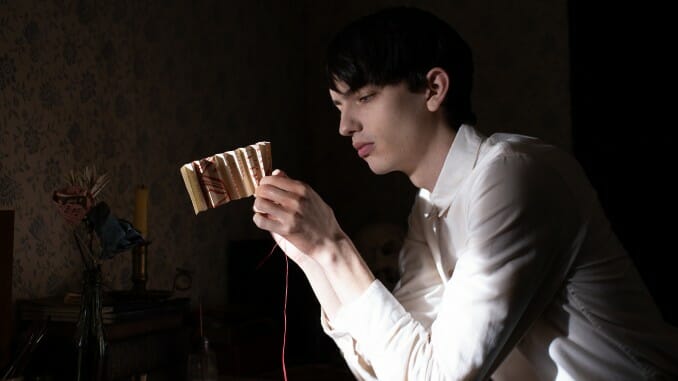How Props Tell the Story of The Power of the Dog’s Decaying Masculinity

On a lonely barn wall in The Power of the Dog, there hangs a saddle with the name “Bronco Henry” etched into it. Though unimposing on its own, the artifact ends up being the thread that ties the film together. Indeed, for our reclusive and thorny cattle-farmer protagonist, Phil Burbank (Benedict Cumberbatch), a saddle isn’t just a saddle. Rather, it’s a reminder of the dogma of rugged masculinity instilled in him by his predecessor, the mythic bronco himself. It represents a set of values Phil attempts to uphold in a world where this kind of manliness is rapidly becoming unnecessary and even passé as the excess and extravagance of the Roaring ‘20s take over—and one he desperately attempts to bolster in order to keep the cowboy lifestyle alive after he’s gone.
![]()
Given this, the way characters interact with the props like the bronco’s saddle ends up being more telling than the way they interact with one another. Phil cradles the saddle as he, shrouded in weathered cowboy attire covered in dirt, quietly realizes that he has been outnumbered by his brother George (Jesse Plemons), George’s new wife Rose (Kirsten Dunst), her delicate son Peter (Kodi Smit-McPhee), and their modern lifestyle which sees no need for traditional men like him. At another point, George notices that the saddle’s gone, eying its fixed spot on the wall with dismay, knowing that its absence means that his brother is continuing on his dead-end, doomed path into the past. To put the nail in the coffin, Peter mounts the saddle with serene, quiet calculation at the end of the film, knowing that he has, at last, outwitted his predecessor—and his generation has finally taken the reins.
Given his attachment to physical emblems of masculinity, it only makes sense that Phil’s impressions of other men are largely based around their physical appearance, and that he is extra attentive to them as a result of shifting social attitudes. Given this, The Power of the Dog ensures in turn that the audience is hyper-aware of seemingly innocuous objects, the way they are treated, and the customs and weight that they carry. When Phil first meets Peter, the latter is a waiter at a tavern he and his crew are stopping by for dinner. Phil promptly mocks Peter for elegantly folding a handkerchief over his forearm, then proceeds to taunt him for his lisp. To Phil, the deliberateness of the cloth on the young boy’s arm indicates an attention to aesthetics that can only be characterized as extravagant, and, by extension, feminine.
Later, a second handkerchief comes into play. It belonged to Bronco Henry, and is introduced when, in a secluded wooded area, Phil pulls it out and masturbates with it. But this handkerchief looks different from Peter’s: It’s aged, creased and spoiled with decades of dirt and grease. This is to be expected, as, for the cowboy, the handkerchief was purely utilitarian. It was worn around the neck to protect from dirt and distemperate weather. For Phil, the implicit masculinity in a dirty, unkempt piece of material is enough to inspire eroticism. Peter’s generation, on the other hand, swept up in the heart of the Roaring ‘20s, has the luxury of donning the handkerchief for the sake of appearance, defending its usage with something as trivial as it being used to catch the drips off of a bottle of wine. Indeed, perhaps the cloth is utilitarian, but only within the parameters of a job that, to a cowboy, appears largely superfluous.
-

-

-

-

- Curated Home Page Articles By Test Admin October 21, 2025 | 3:10pm
-

- Curated Home Page Articles By Test Admin October 21, 2025 | 2:57pm
- Urls By Test Admin October 21, 2025 | 2:57pm
- Curated Home Page Articles By Test Admin October 21, 2025 | 2:55pm
-

-

-

-

-

-

-

-

-

-

-

-

-

-

-

-

-

-

-

-

-

-

-

-

-

-

-

-

-

-

-




































